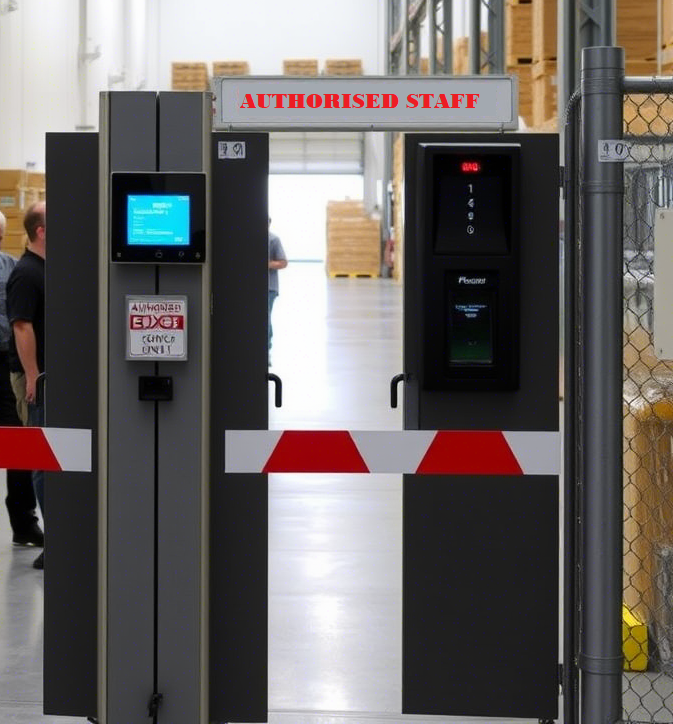
Digital Transformation in Retail: A Guide for South African Retailers
Introduction to Digital Transformation in Retail
Digital transformation is reshaping the retail landscape by integrating technology into every aspect of business operations. In South Africa, retailers are increasingly adopting digital tools to address unique challenges such as infrastructure limitations, diverse consumer bases, and economic fluctuations. From enhancing customer experiences to streamlining supply chains, modern retailers are leveraging digital strategies to stay competitive and meet evolving consumer demands.
In this whitepaper, you'll explore key strategies for implementing digital transformation in the South African retail market effectively.
Why Digital Transformation Matters in South Africa
The South African retail sector faces distinct challenges, including a mix of urban and rural markets, varying levels of digital adoption, and economic constraints. Digital transformation offers solutions that can:
- Bridge the gap between urban and rural consumers through e-commerce and mobile platforms.
- Enhance operational efficiency in a region with logistical challenges.
- Enable data-driven decision-making to cater to diverse consumer preferences.
- Drive innovation to compete with global retail trends while addressing local needs.
For example, retailers like Shoprite and Pick n Pay have successfully implemented mobile payment solutions and loyalty programs tailored to South African consumers.
Key Pillars of Digital Transformation in South African Retail
1. Mobile-First Strategies
With over 90% of South Africans using mobile phones, a mobile-first approach is critical. Retailers are investing in mobile apps, SMS notifications, and mobile payment systems like PayFast and Zapper to engage customers effectively.
2. E-Commerce Growth
The rise of platforms like Takealot and BidorBuy highlights the growing importance of e-commerce in South Africa. Retailers are expanding their online presence to reach untapped markets and provide convenience to tech-savvy consumers.
3. Data-Driven Personalization
Retailers are using data analytics to understand consumer behavior and preferences. For instance, personalized promotions and targeted ads based on purchasing patterns are helping businesses like Woolworths build stronger customer relationships.
4. Supply Chain Optimization
South Africa's geographic diversity and infrastructure challenges necessitate efficient supply chain management. Technologies like IoT and AI are being used to track shipments, reduce costs, and ensure timely deliveries.
Steps to Implement Digital Transformation in the South African Market
Step 1: Assess Local Market Dynamics
Evaluate factors such as internet penetration, consumer behavior, and regional preferences. For example, rural areas may benefit more from USSD-based services, while urban centers are ready for advanced digital solutions.
Step 2: Partner with Local Tech Providers
Collaborate with local fintech companies (e.g., Yoco) and logistics providers to tailor solutions to the South African context.
Step 3: Focus on Financial Inclusion
Integrate affordable payment options like mobile money and lay-by systems to cater to underbanked populations.
Step 4: Invest in Skills Development
Train employees on new technologies and foster a culture of innovation to overcome the skills gap prevalent in the region.

Step 5: Monitor Regulatory Compliance
Stay updated on South Africa's data protection laws (e.g., POPIA) and ensure compliance when implementing digital tools.
Common Challenges in South African Retail Digital Transformation
While digital transformation offers immense potential, South African retailers often encounter obstacles along the way. Common challenges include:
- Limited Internet Access: Rural areas face connectivity issues, hindering the adoption of digital solutions.
- Economic Constraints: High unemployment and inflation impact consumer spending and investment in technology.
- Infrastructure Gaps: Logistical challenges and power outages disrupt supply chains and operations.
- Cultural Differences: Diverse demographics require tailored strategies to resonate with different consumer groups.
- Cybersecurity Risks: Increased digital adoption raises concerns about data breaches and fraud.
Best Practices for Success in South Africa
- Prioritize affordability and accessibility to cater to diverse income levels.
- Use localized content and multilingual support to connect with all consumer segments.
- Leverage partnerships with government initiatives and private organizations to drive digital inclusion.
- Adopt agile methodologies to adapt quickly to changing market conditions.
Conclusion
Digital transformation is essential for retailers in South Africa to remain competitive and address the unique needs of their market. By focusing on mobile-first strategies, e-commerce growth, and data-driven personalization, retailers can unlock new opportunities and drive sustainable growth. This whitepaper serves as a foundational guide to help South African retailers navigate their digital transformation journey and thrive in an increasingly connected world.
About the Author
PG Van Der Westhuizen
Seasoned retail expert with 3 decades of transformative retail experience



